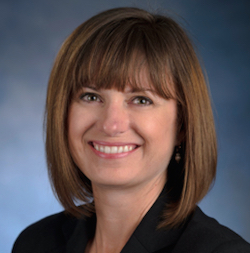
Senior living communities can support residents who are part of couples by focusing on their individual needs as well as their shared needs, according to the results of a recent study.
Such an approach is particularly important as couples experience physical and cognitive decline over time, according to the findings, published in the journal The Gerontologist.
“There are some scenarios, particularly if the caregiving spouse is doing so much work and worrying so much, that they can compromise their health by trying to do more than they’re able to do,” said lead author Candace Kemp, Ph.D., an associate professor in the Gerontology Institute and Department of Sociology at Georgia State University. “I think it’s finding that balance between what’s best for both the individual and the couple, and sometimes those are in conflict.”
For instance, Kemp said, couples usually don’t experience health declines at the same rate. If a husband or wife suffers from cognitive impairment, then the assisted living community might suggest that the person with dementia move to its memory care unit, leaving his or her spouse on the assisted living side, which separates the couple.
Kemp hopes to uncover more solutions to situations such as this one in her research.
“I think doing work in this setting is important,” she said, “and it’s quite possible with people living longer that there will be more couples in these situations, whether they’re married or unmarried. We certainly know very little about unmarried couples in later life.”
Kemp and colleagues at Emory University in Atlanta interviewed and observed 29 couples (26 married and three unmarried) in eight diverse assisted living communities in Georgia for one year. The 26 married couples were in long-term relationships, whereas the three unmarried couples met in assisted living.
The researchers found pros and cons to these intimate relationships of married and unmarried couples in assisted living. On the plus side, residents had companionship, support and affection. On the other hand, however, residents could feel burdened by caregiving, defined by a partner, and limited in their choices. Additional downfalls included jealousy and marital infidelity and, especially for women, becoming the subject of gossip due to differing cultural norms for older men and women and married and unmarried couples.
On balance, however, Kemp said, assisted living communities can be a positive environment for residents’ intimate relationships.
“The nice thing about these communal settings is there are a lot of widowed, divorced and never-married people, and there is potentially opportunity to develop relationships,” she said. “It makes a huge difference in the quality of life and the day-to-day life experience to have that intimate connection with somebody else. These were probably unexpected relationships for the unmarried couples, but very fulfilling relationships for those who manage to find a partner.”



